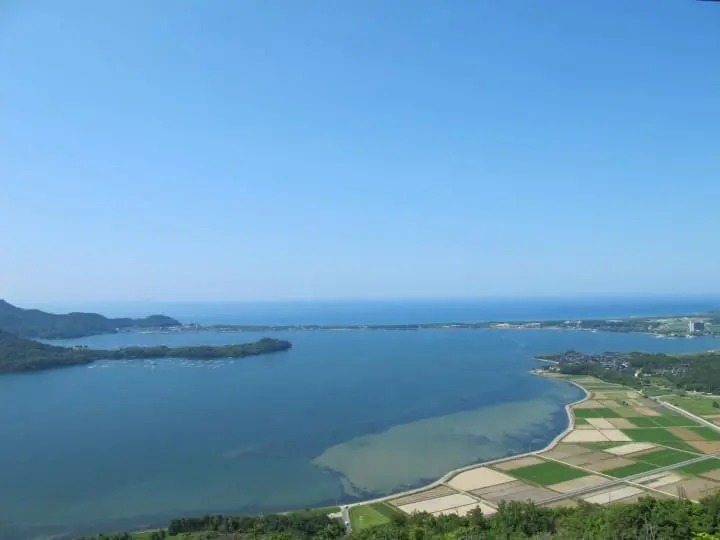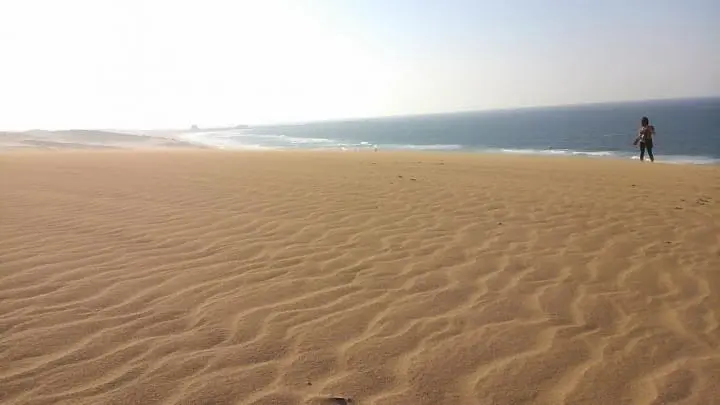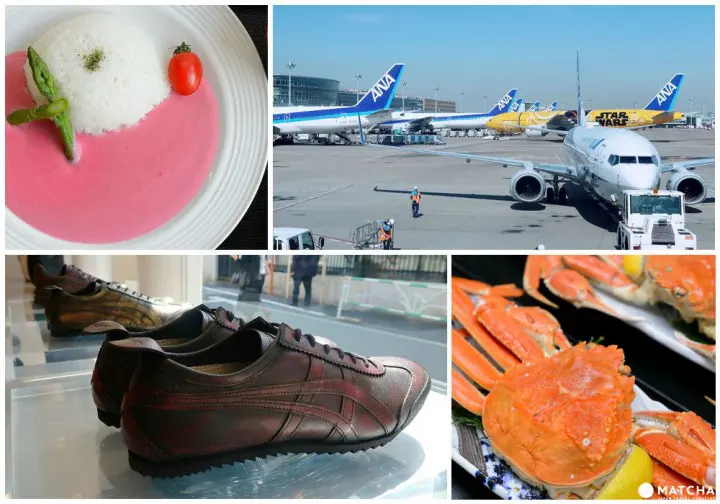Enjoy The Island Nature Of Japan! National Parks With Ocean Views

If you want to experience the outdoors in Japan, look no further than a visit to one of Japan’s 34 national parks. In this article, we introduce the parks that offer great views of the sea, highlighting the culture that this environment produces.
The Great Diversity of Japan's Natural Environment
If you want to experience the outdoors in Japan, look no further than a visit to national parks.
Renowned highly worldwide, the pristinely maintained national parks in Japan offer a high-quality and relaxing experience for all who visit.

Picture courtesy of the Ministry of the Environment, Chugoku-Shikoku Regional Environment Office
In particular, we recommend visiting national parks by the ocean.
The draw of Japan’s nature lies in its diversity, as there are mountains, ocean, wetlands, lakes, and other natural resources contained in Japan’s borders.
Make sure to experience the nature of the ocean on your trip to Japan, a unique island nation!
Japan’s National Parks

Japan boasts 34 national parks. The individual parks here are not as expansive as areas like the world-renowned Yellowstone National Park. Privately-held land is also found within the borders of some national parks in Japan.
However, national parks convey the history and stories of people in Japan coexisting with nature since long ago.
Japan’s national parks contain gorgeous outdoor landscapes as well as offer encounters with a culture rooted in nature, religion, and the everyday life.
1. Setonaikai National Park - Scenic Islands Set on the Peaceful Sea

View of the archipelagoes of the stunning Seto Inland Sea (Kagawa Prefecture). Picture courtesy of the Ministry of the Environment, Chugoku-Shikoku Regional Environment Office
Setonaikai National Park, established in 1934, was one of the first areas designated as a national park in Japan.
This park is Japan’s largest national park, containing 10 prefectures and 1 municipal prefecture and stretching from Osaka to Oita Prefecture.
The view of the island scenery is breathtakingly beautiful and resembles a painting.
On top of the beautiful outdoors, the entire region has prospered culturally throughout history, with areas where humans and nature have continued to exist harmoniously. Historical remains of the sea transportation which took place during the Edo period (1603-1868) can be discovered throughout the park.
Visit the World’s Biggest Whirlpool

Naruto Whirlpool. Picture courtesy of the Ministry of the Environment, Chugoku-Shikoku Regional Environment Office
The archipelago landscape can be enjoyed from different areas, like the coast or from observation decks. However, this park provides the best view.
The Geiyo Islands, which are associated historically with the Murakami Kaizoku, Japan’s largest group of pirates, boasts several of the most picturesque landscapes domestically.
Another must-see is the Naruto Whirlpool, designated as one of Japan’s top 100 scenes. This fast, swirling whirlpool is considered to be the biggest in the world. A ferry ride on the Uzushio Cruise provides an exciting, close-up look at the whirlpool. Due to the tides, the whirlpool can be seen only twice per day. It is also highly recommended to see when whirlpool grows in size, which occurs two times a month during a spring tide.
For more information, check the following website:
http://www.naruto-kankou.jp/uzu/calendar/ (Japanese)
Encounter the Rich History of an International Trade City

Townscape of Tomonoura (Hiroshima Prefecture). Picture courtesy of the Ministry of the Environment, Chugoku-Shikoku Regional Environment Office
Setonaikai National Park also is home to areas that prospered culturally from trade. One example is Tomonoura in Fukuyama City, Hiroshima Prefecture, which flourished as an international trade city due to the ebb and flow of the tides in this region. This history and nostalgia can still be felt in the townscape today, and visitors will be transported back to a time when this trade and exchange occurred.
Savor Oysters in Hiroshima, the Largest Producer in Japan

The Setonaikai area is also known as a treasure trove of cuisine, with each region producing all types of marine products and seafood.
Oysters from Hiroshima Prefecture are particularly renowned in Japan. You can enjoy these exquisite oysters raw, fried lightly in oil, and in cooked in a rice dish, flavored with Japanese broth.
Make sure to plan a visit to experience the many wonders of the Seto Inland Sea.
2. San’in Kaigan National Park - Magnificent Coastal Landscapes and Fishing Village Culture

The spectacular Kumihama Bay of “Umi-no-Kyoto” in Northern Kyoto. Picture courtesy of the Ministry of the Environment, Chugoku-Shikoku Regional Environment Office
This is 75 kilometer-long national park nestled by the Japan Sea coastline, expanding from Kyoto Prefecture to the east and the sand dunes of Tottori Prefecture to the west.
Mountainous regions connect directly to the ocean here, resulting in ria coastlines consisting of interesting landscapes of coastal geography.
The eastern end of the park includes Kyoto, home to Kiyomizu Temple and other famous historical buildings.
The expansive seashore of Kyoto is filled with coastal towns that produce crab and abalone.
After sightseeing in the city, travel to this coastal area and enjoy the ocean in Kyoto.
Tottori Sand Dunes - Ride Camels and Enjoy Panoramic Views

The impressive Tottori Sand Dunes stretching along the Japan Sea (Tottori Prefecture). Picture courtesy of the Ministry of the Environment, Chugoku-Shikoku Regional Environment Office
San’in Kaigan National Park is also home to destinations brimming with nature, including the Tottori Sand Dunes and Uradome Coast.
The Tottori Sand Dunes, in particular, are a must-visit. These sand dunes are formed from sand from the Chugoku mountains, and span 16 kilometers east to west and 2.4 kilometers north to south.
This is also one of the few spots where you can experience riding a camel in Japan.
Make sure to get a photo riding the camel with the majestic sand dunes in the background.
Immerse Yourself in Local Atmosphere - Fishing Villages of Kyoto and Hyogo

Experience the one-of-a-kind local atmosphere with a stroll around fishing villages (Hyogo Prefecture). Picture courtesy of the Ministry of the Environment, Chugoku-Shikoku Regional Environment Office
Fishing villages situated along the Sea of Japan coastline are little-known destinations to most travelers. A visit to these spots, however, is a chance to encounter the well-preserved, historical culture of fishing villages in Japan.
There are also many domestically-renowned onsen (hot springs) in the coastal area. One such hot spring is Kinosaki Onsen, particularly famous for being a favorite spot of Japanese literary scholars and writers.
Enjoy the local atmosphere of the townscape, indulge in regional dishes, and relax after a day of exploring in the soothing onsen waters. This is the perfect way to travel in Japan’s countryside.
Matsuba Crab - Satisfy Your Hunger with Winter Dishes

Snow crab, a delicacy of the San’in Region
Sharing part the same name of the national park, San’in itself is a region located in Western Japan on the side of the Sea of Japan.。
San’in is a region renowned for its food, and snow crab is considered the royalty of winter cuisine. Snow crab caught in the San’in region is called “Matsuba gani,” or Matsuba crab, and is truly delectable, filled with meat and savory flavor.
The crab season starts in early November each year, so be sure to adjust your travel plans accordingly.
3. Daisen-Oki National Park - Encounter Nature and Spirituality in the Land of Myths

The renowned, dramatic scenery of Hinomisaki Coast. Picture courtesy of the Ministry of the Environment, Chugoku-Shikoku Regional Environment Office
This is a national park spanning across three prefectures of Tottori, Shimane, and Okayama. Both mountainous regions and coastal areas await those who visit.
The mountainous area is home to Mt. Daisen, the tallest mountain in the Chugoku mountain range, and Mt. Hiruzen. Splendid landscapes and rocks formed from volcanic activity, lush forests, and vast grasslands also greet travelers who come here.
The coastal area is known for its complex shoreline scenery, sculpted by waves and the seasonal winds from the Sea of Japan. This region has thrived since ancient times and is featured in several Japanese myths. Visitors are encouraged to immerse themselves in the historical culture and stunning scenery, as there is a strong, long-continuing tradition of nature intermingling with spiritual beliefs here.
The Captivating Beauty of Candle Island (Shimane Prefecture)

Rosoku-jima Island, or Candle Island (Oki Islands and Dogo-jima Island). Picture courtesy of the Ministry of the Environment, Chugoku-Shikoku Regional Environment Office
Rosoku-jima Island, or Candle Island, is an especially gorgeous spot, recommended for travelers to visit enjoying the pristine nature of Daisen-Oki National Park.
Candle Island is a 20 meter-tall rock with an unusual shape, formed by erosion from wind and waves. In the evening, the sun appears to set on the tip of the rock, creating a mystical and dramatic scene.
Boat rides run between April to October. Bring a camera and capture the light of the sun before it sets. Visitors can also enjoy sea kayaking, diving, and other marine sports, as well as hiking in the magnificent outdoors.
Discover Japanese Religion and Culture (Tottori, Shimane, and Okayama)

Burning of the western grassland (Mt. Sanbe). Picture courtesy of the Ministry of the Environment, Chugoku-Shikoku Regional Environment Office
Daisen-Oki National Park also is home to an area where visitors can encounter the ancient remnants of Japanese spiritual practices.
Many spots, including Mt. Daisen, a mountain associated with Sangaku shinko, or mountain worship, and Izumo Grand Shrine, known for its national treasure-designated main hall, provide ideal opportunities to learn about this culture and spirituality.
Central Shimane Prefecture contains Mt. Sanbe with its massive grasslands at its foot. These grasslands have been utilized for agriculture since the Edo period and convey the rich stories of how people lived long ago.
Hi-ire, or burning practices, occur every year in late March. Visitors can observe this tradition, and those interested are encouraged to make their trip during this time.
Local Recipes - Make Your Own Soba Noodles (Shimane Prefecture)

Soba (buckwheat noodles) are a must-try regional dish when visiting Daisen-Oki National Park. In fact, this region is one of the few areas in Japan renowned for its delicious soba.
The Izumo Grand Shrine area is renowned for having many businesses offering homemade, authentic soba. Some of these establishments even offer workshops where visitors can make their own soba.
Learn how to make delicious soba from local residents and bring soba flour back from your travels to share with friends and family.
4. Ashizuri-Uwakai National Park - A Stunning Sea and the Kuroshio Current

Nametoko Gorge (Uwajima City, Ehime Prefecture), A Breathtaking Mountainous Spot. Picture courtesy of the Ministry of the Environment, Chugoku-Shikoku Regional Environment Office
Ashizuri-Uwakai National Park is a region by the Pacific Ocean, affected by the world’s largest warm ocean current known as the Kuroshio. Located in the region of Japan’s Shikoku island, this current has created bountiful nature, allowing visitors to experience a unique culture and tradition at this park.
This park features similar landscapes to that of Daisen-Oki National Park, mentioned earlier. The southwest is coastal, and the rest of the area is mountainous with elevations of around 1,000 meters and rugged mountains.
However, unlike Daisen-Oki, Ashizuri-Uwakai National Park contains breathtakingly beautiful coral reef and is the habitat for subtropical marine life. This is rarely found at such high latitudes, however, the warm temperatures brought by the Kuroshio Current has allowed this coral and life to flourish.
Astonishing Underwater Scenes - A Collage of Bright Coral Reef

A brilliant aquatic view created by the warm currents of the Kuroshio Current. Picture courtesy of the Ministry of the Environment, Chugoku-Shikoku Regional Environment Office
Ashizuri-Uwakai National Park is magnificent to explore on land, but visitors are especially recommended to enjoy the scenery hidden in the sea.
Many travelers consider the southern islands of Okinawa superior for coral reef and tropical fish. However, visitors can experience snorkeling without going as far as Okinawa, right in the Shikoku region.
Delight in the vivid and colorful seascape with glass-bottom boats, snorkeling, and underwater observatories.
88 Temples and Shrines - Pilgrimage Culture

Shikoku’s 88 Temples. View of pilgrims.
Ashizuri-Uwakai National Park is in Shikoku, a region known for its 88 sacred temples and shrines.
The practice of visiting spiritual sites is known as “ohen-ro” in Japanese. “Ro” means path, which is why this park features walkways and paths.
Visitors can enjoy nature with a stroll on these paths and also meet pilgrims on their way to shrines and temples.
Indulge in Bonito - Fresh, Regional Cuisine

When visiting the area, savor Bonito Tataki, a seared skipjack tuna dish. This is famous in Kochi Prefecture, which is also within Ashizuri-Uwakai National Park.
Diners can enjoy the bonito in two ways: seared over an open straw fire, and fresh. This is an excellent way for travelers to discover a new cuisine who are less-experienced with eating raw fish.
A Once in a Lifetime Experience with Nature at Japan’s National Parks
On top of impressive and bountiful nature, national parks contain rich culture and history.
National parks in the Chugoku and Shikoku regions are filled with countless destinations where visitors can encounter nature coexisting with culture. With so much to do and see, be sure to plan an adventure soon!
Read also
Sponsored by HASHIWATASHI PROJECT
MATCHA's promotional account for corporate and local government advertising. We aim to provide useful information to our readers in an enjoyable manner.




































![[2026] Top 5 Strawberry Picking Spots in Tokushima, Naruto| Farms and Access Guide for January to May](https://resources.matcha-jp.com/resize/720x2000/2025/03/06-227165.webp)



